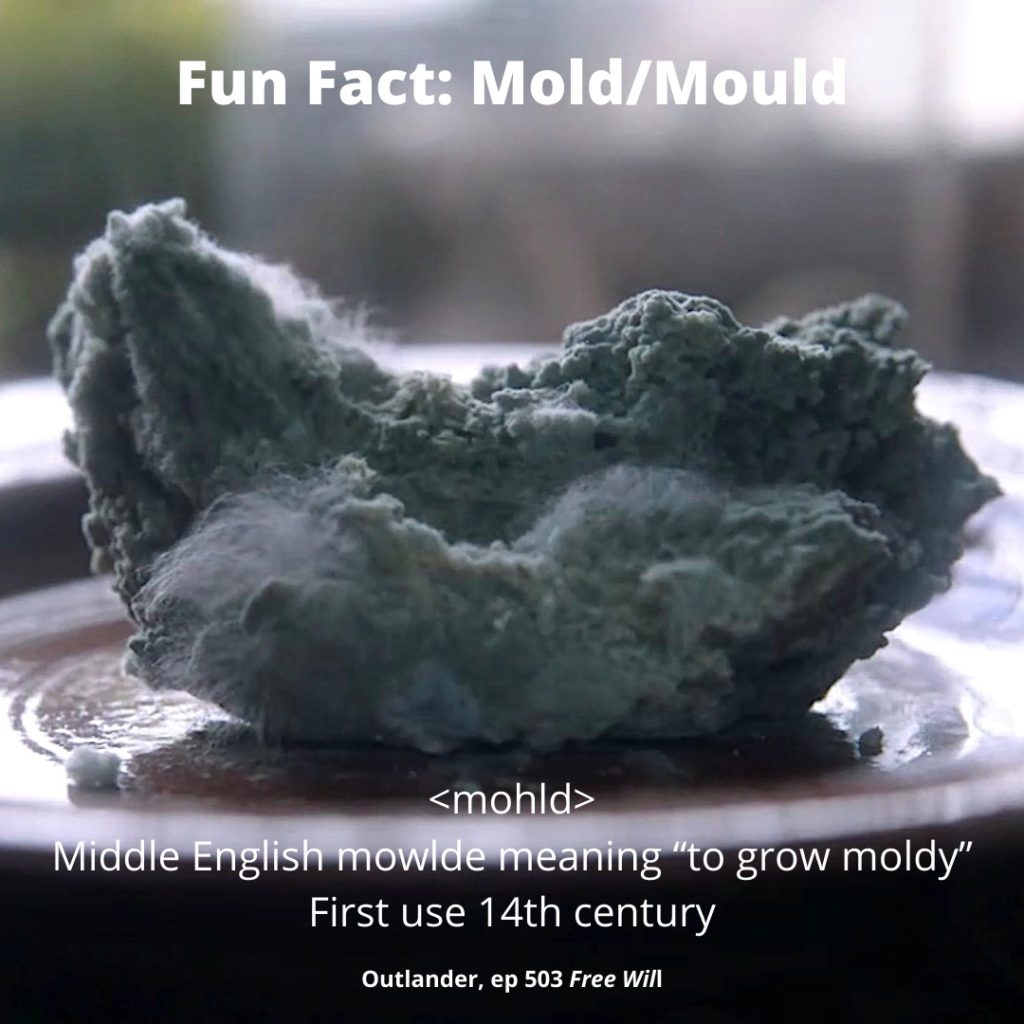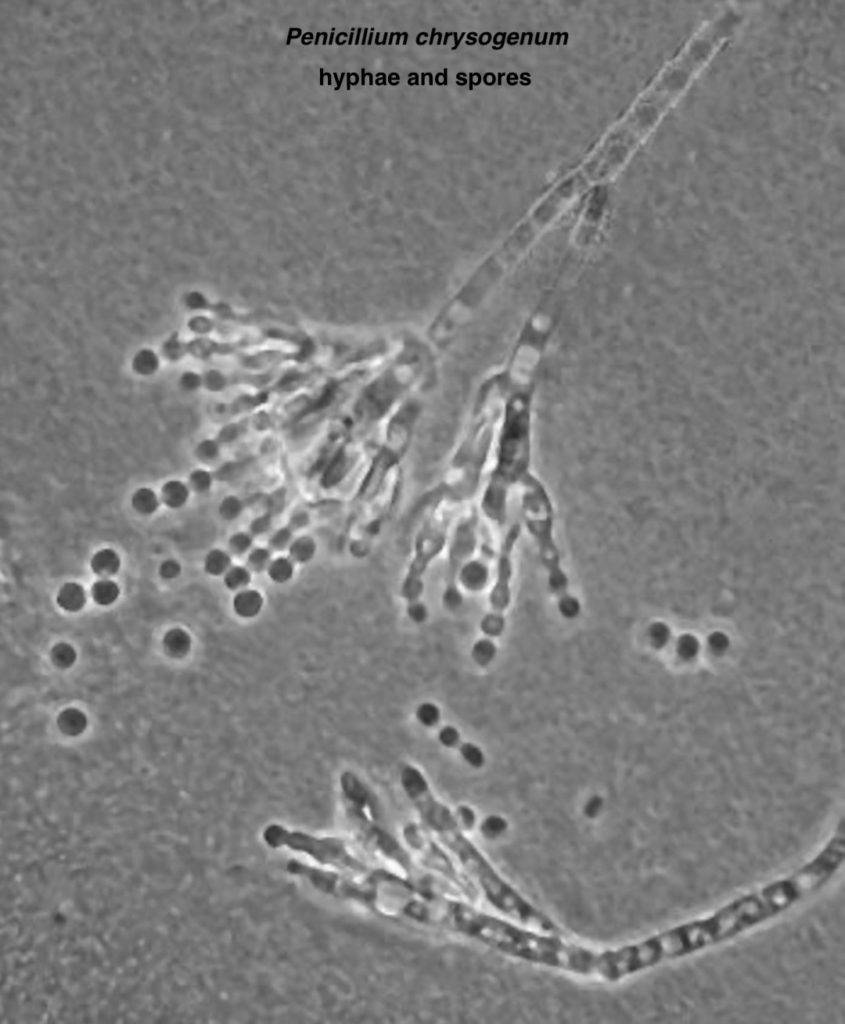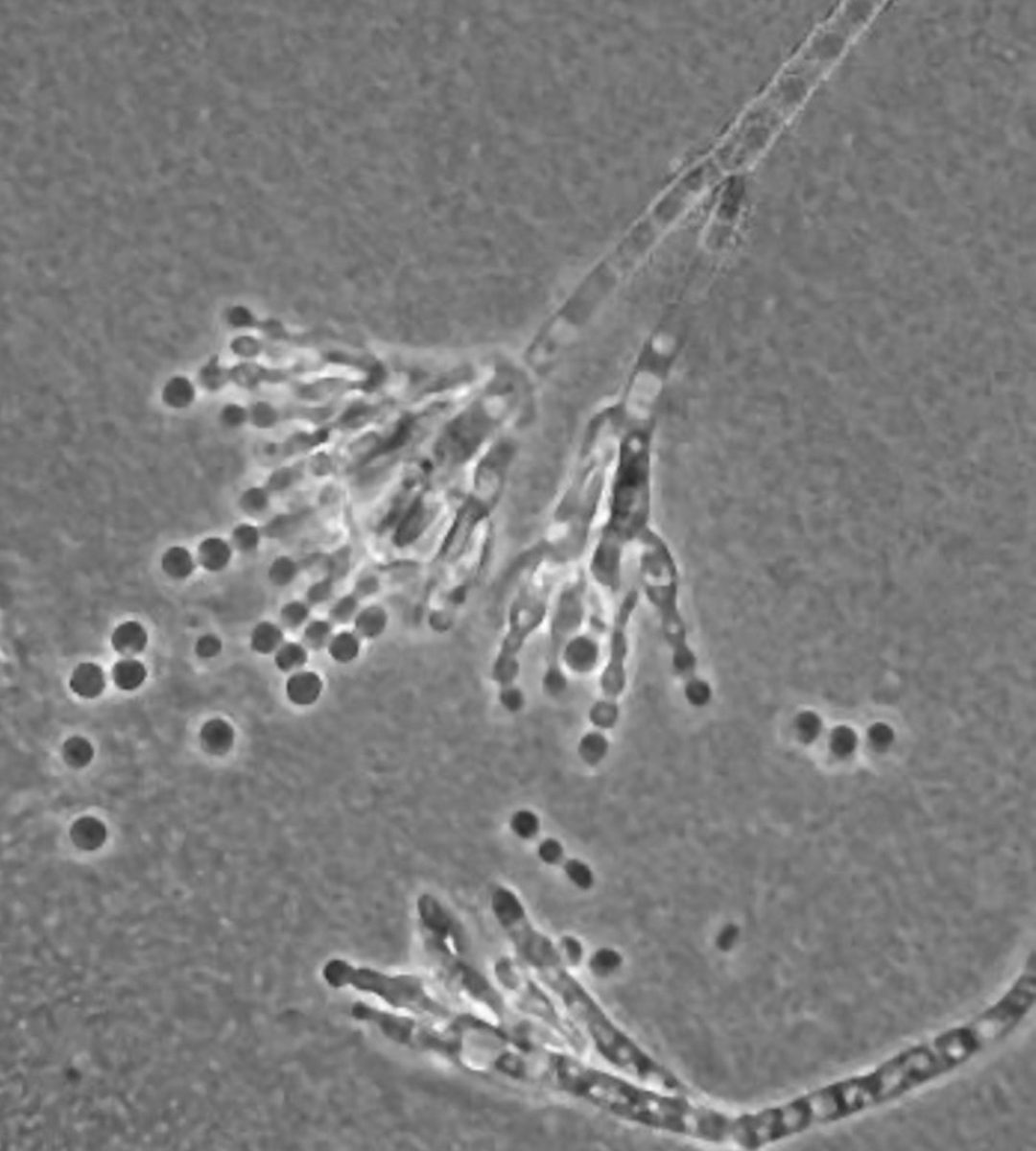
Anatomy Def: Mould/mold is a superficial, hairy growth produced by some fungal species; discoloration and woolly surfaces are common features.
Outlander Def: The icky layer of fuzz on Claire’s handmade bread which she hopes will yield penicillin! 🤞🏻
Learn about penicillin mold in Anatomy Lesson #57, Needles, Nerves and Penicillin.
Question #1: So, which is it, mold or mould? Ha, ha! Well, that depends on where you live. The entire English-speaking world, excepting the U.S., spells it, mould. Being somewhat contrarian, the US is the only English-speaking country that spells it, mold! 😉
Question #2: What is mold/mould? Molds are a large and diverse group of fungi (Pssst….. fungus is singular spelling, fungi is plural).
Question #3: What are fungi? In the past, fungi were classified as plants, but science marches on and fungi are now assigned to their own kingdom, placed on an even keel with plants, animals and two or three other kingdoms of life!
Mold Anatomy: Do molds exhibit anatomical features? Indeed they do! Molds grow by producing a network of transparent, branching tubules known as hyphae which lend molds their typical woolly-appearance. Molds also may have a dusty surface due to the production of spores at the tips of hyphae.
Claire kens that examination of spores and hyphae may help identify the type of mold she seeks; hence, experiments, microscope and Apprentice Marsali!
She seeks to grow a Penicillium strain that will provide a crude antibiotic. Claire, and now Marsali, will search for hyphae that look like wee paintbrushes in the microscope👇🏻! The small round globs are spores.

Let’s wish them the best of luck, although I do fash over Fergus’ recent paper grab; possibly a page of Claire’s lab notes? 😱
Spores act like seeds, a clever strategy to start new colonies. Mold spores released from parent hyphae are widely dispersed by:
-
- air currents (can be airborne for long periods and distances)
- fur
- feather
- clothing, etc.
If spores land on organic material (e.g. chunks of homemade bread!) along with moisture, dim light, and warmth, they undergo cell division to produce the fuzzy molds our Sassenach seeks!
Fun Fact: Few molds will grow below 39 °F (4 °C) which is why refrigerators recommend settings around 38 °F. But, some hearty molds can survive Antarctica, acids, anti-bacterial soap, and jet fuel! 😳
Molds are a nuisance when they spoil food and damage property. They may also be pathogens causing allergies, invading tissues (e.g. lungs), or generating harmful toxins. On the other hand, molds are extremely useful in producing various foods and beverages, and by providing enzymes, pharmaceuticals, and antibiotics!
Read about Claire’s mold experiments in The Fiery Cross:
I twiddled the quill, rolling it between thumb and forefinger. I had kept a faithful account of my experiments with penicillin—the growing of cultures on media ranging from bread to chewed pawpaw and rotted melon rind, painstaking descriptions of the microscopic and gross identification of the Penicillium molds, the effects of—to this point—very limited applications.
Read the books, folks, wherein Diana faithfully details the mold experiments! 🙏🏻
See Claire’s bread mould/mold in Outlander episode 502, Between Two Fires. Yuck! 😝
The deeply grateful,
Outlander Anatomist
Follow me on:
-
- Twitter @OutLandAnatomy
- Join my Facebook Group: OutlandishAnatomyLessons
- Instagram: @outlanderanatomy
- Tumblr: @outlanderanatomy
- Youtube: Outlander Anatomy
Photo Credits: Sony/Starz, www.botit.botany.wisc.edu


Love reading your excellent blog
Why, thank you so much for reading my work and taking the time to write! 😉
There’s mair than twa ways tae spell mould. In the Scots leid we can hae mowld. Some o us pronounce it like that tae – ie. “An aul mowldy piece o breid’ 😉🏴.
Ann, How wonderful! I thank you for your comment. I did not know this, but should have known that the Scots would also go their own way. 🙂
I once stayed in Mold, Wales!!!😉
I once stayed in Mold, Wales!!!😉
LOL! Wonderful, Susan. What an interesting name. thanks for writing!